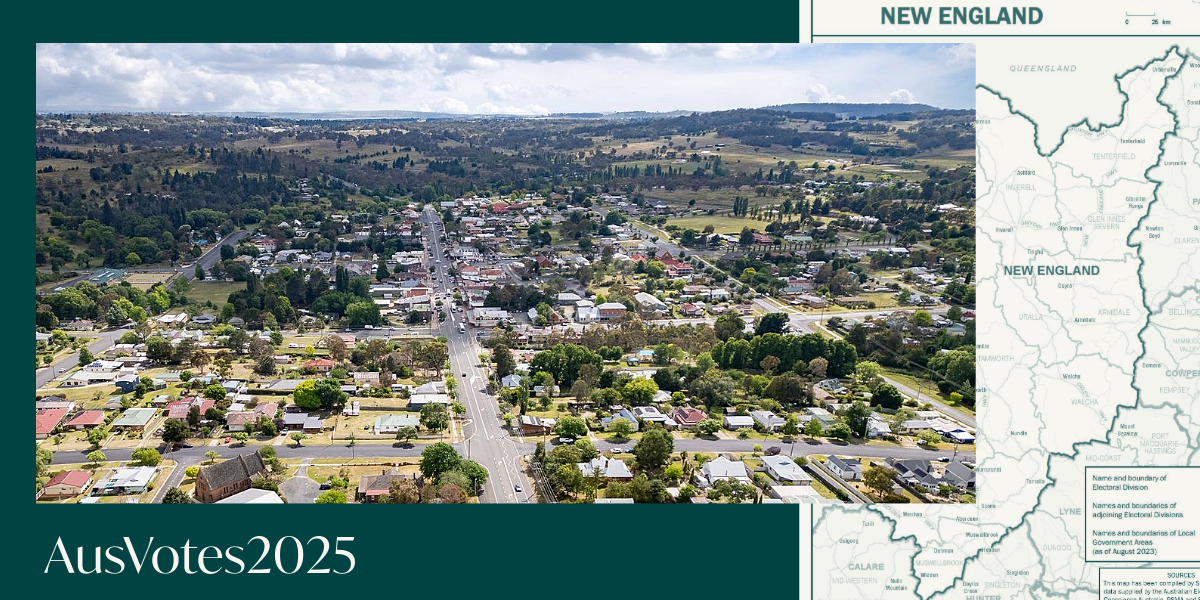A draft housing strategy for Uralla put out for public comment over the last two months has caused considerable concern and confusion for locals – particularly in light of a proposal to increase rates by 45%.
But in the context of the federal election where housing affordability is a major issue, it makes a mockery of campaign promises and underscores how no federal incentive will matter if there is no available land.
Housing takes centre stage in federal election campaign
Australia’s housing crisis has been a key focus during the federal election, especially for first-home buyers. But according to the Grattan Institute, the real problem is a lack of supply — something neither Coalition nor Labor policies would fix.
The Coalition pledged to make mortgage payments tax deductible for first-home buyers purchasing newly built homes, and allowing first-home buyers to withdraw up to $50,000 from their superannuation. However, experts argue these measures would increase demand and drive prices higher while hurting retirement savings.
Labor’s 5 per cent deposit scheme is cheaper, estimated at $5.8 million, but would have minimal impact. Its “help to buy” scheme would see the government co-purchase up to 40 per cent of a property but is limited to just 10,000 places a year.
Labor’s more promising plan is a $10 billion investment to build 100,000 homes reserved for first-home buyers, potentially lowering prices and rents by up to 2.5%. But they will have to work hard to avoid funding homes that state governments intend to build anyway, or saddling successful developments with requirements that make developments uneconomic to build.
It follows the Coalition’s recently announced plan to offer councils $5bn (via an unspecified mix of grants and concessional loans) to connect new homes to roads, sewerage, water, and other infrastructure around housing projects.
At least, both major parties are now competing to build more homes — crucial for improving affordability. Australia has not built enough housing to meet the needs of our growing population, largely because state land-use planning regimes have made it too hard to build more homes.
Enter, Uralla Shire Council and their ‘infill’ strategy
The Uralla Shire Local Housing Strategy 2025–2045 (Draft), prepared by consultants Remplan, faced serious criticism when Council voted in February to put it on exhibition for 56 days — the legal minimum — despite its unfinished state.
Mayor Robert Bell and Cr Tom O’Connor pushed it through to publication avoid perceptions of delay. “It does need a lot of refinement,” Cr O’Connor said.
Cr Leanne Doran argued it should have been further developed first, describing it as a “good foundational document” but noting too many gaps to endorse it in good faith.
Cr David Mailler criticised the strategy’s “very shallow” demographic analysis, ignoring Uralla’s lifestyle migration trends and proposing only infill development without expanding town boundaries, and questioning the assertion in the document that retirees with empty bedrooms want to downsize to 1 bedroom apartments.
“We need to have another workshop and tease some of those issues out,” he said.
Cr Adam Blakester refused to support the strategy outright, citing “glaring gaps” and no council input.
“It’s a strategy with our name that we’ve had no input to. That makes a mockery of anything with our brand on it,” he said.
Blakester highlighted that the infill development strategy would add just 10–20 homes a year.
“That does nothing to address housing affordability, rental stress, the workers camp, social and affordable housing.”
“And then there is a range of inaccuracies as well,” Blakester said, noting the document is not even clear when it is talking about the town Uralla, or the Uralla Shire.
No more land to build and a 45% rates hike for Urallans
Blakester, in the end, was the only one to vote against releasing the document for comment. However, when the Draft Housing Strategy was put on the website and otherwise communicated by Council staff, it did not carry with it the concerns of Councillors that it required significant work and had significant gaps.
With the deadline for ‘exhibition’ comments ending yesterday, many ratepayers New England Times has spoken to remain confused about the process, if they were aware of it at all.
Concern is particularly high among residents in Invergowrie and Saumarez Ponds, which are for most intents and purposes suburbs of Armidale. Because residents in those localities mostly work and do their business in Armidale, they generally are unaware of what is going on in the Uralla township and had not read the local fortnightly community newsletter Wordsworth, which was the only media coverage of the plans, or otherwise herd much about it.
“I appreciate they did some consultation last year, and again during the holidays, but that’s in Uralla – like we don’t matter. Besides which, they should have rejected this poorly put together strategy, if you can call it a strategy – it certainly wouldn’t past muster at my work,” said one resident who asked not to be named.
Those that have taken the time to look at Council’s plans are angered by the apparent conflict with the proposal for a 45% increase to rates through a special rate variation (SRV) as well as an increase in waste fees, while simultaneously not unlocking much needed additional blocks to allow for an expansion of the communities within Uralla Shire.
The reference to the proposed SRV and waste fees was apparently in the draft Long Term Financial Plan, discussed and voted to be put to exhibition in the March meeting of Council, for which consultation closing tomorrow, April 30. The Long Term Financial Plan is a required document every local council produces.
Any concerns about the competence of staff and operations at Uralla Shire Council which may have been raised by the half-baked housing strategy were not put to bed by the failure to effectively upload the Draft Long Term Financial Plan to its website. Click on the link on the Exhibition page, and only a single annexure of financial projections is delivered – the Plan, normally a sizable discussion document, is not available.
Repeated requests to Uralla Shire Council to provide a copy of the full draft Long Term Financial Plan document to New England Times were responded to by General Manager Toni Alvarey with a link to the same page on the website, and a repeated refusal to accept that the document had not been uploaded properly.
A long list of questions about the draft housing strategy and its many gaps and issues have not yet been answered by Council.
The future looks expensive
New England candidates have not said much about housing specifically, other than reiterating party lines, and there have been some efforts to engage with agencies like Homes North to find out what needs to be done in terms of affordable and social housing.
Housing affordability has, however, been raised by many residents, including at last night’s candidate forum in Glen Innes.
While federal election candidates and political leaders pitch that they are all going to do things to make housing cheaper, and voters try to make up their mind, the Uralla example indicates that this may not be a federal issue at all.
Follow all the New England Times coverage of the federal election here or have your say on Engage
See more about the race in New England here
See more about the race in Parkes here


